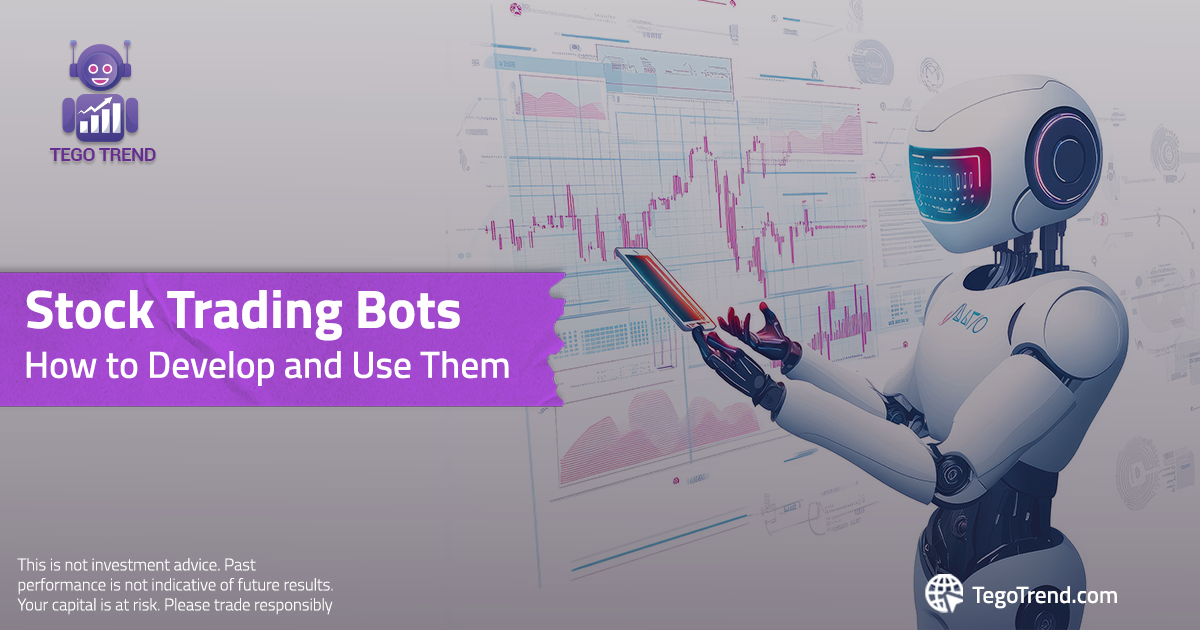Stock Trading Bots: How to Develop and Use Them
Stock trading is one of the most popular forms of investment, where investors buy shares of publicly listed companies to profit either from price appreciation or dividends. With the rise of technology, stock trading bots have emerged as automated solutions that monitor markets and execute trades quickly and precisely — free from emotional influence. These bots are especially powerful in volatile and fast-moving markets.
1. Defining the Bot’s Objective
In the stock market, a bot can serve multiple purposes — from day trading and medium-term investing to scanning hundreds of stocks simultaneously to find the best opportunities.
Some bots are designed to follow news-based strategies, reacting to financial reports and earnings announcements, while others rely purely on technical analysis indicators.
2. Choosing the Right Trading Environment
Stock trading bots operate through trading platforms and exchanges that support API integration.
A suitable trading environment should provide:
Accurate real-time price data
Fast order execution with minimal latency
Any delay in order processing can significantly affect results in the fast-paced stock market.
3. Designing the Core Strategy
Different trading styles require different strategies:
Day Trading: Exploiting small intraday price movements.
News-Based Trading: Reacting to corporate announcements and financial disclosures.
Technical Analysis: Using indicators such as moving averages, support/resistance levels, and trading volume.
The bot must be programmed to follow a well-defined strategy that matches the behavior of the targeted stocks.
4. Choosing the Programming Language
Languages like Python, C++, and JavaScript are common due to their extensive libraries for handling large financial datasets and API connections.
The choice depends on:
The complexity of the trading algorithm
The volume and frequency of market data required
5. API Integration
An API (Application Programming Interface) allows the bot to communicate directly with stock exchanges and brokers.
Through APIs, the bot can:
Retrieve real-time market data and indicators
Monitor order books and volume
Execute buy and sell orders automatically
6. Risk Management
Since stock prices can change rapidly, risk management is crucial.
An efficient bot should include:
Automatic stop-loss orders to minimize potential losses
Trade size limits relative to total capital
Take-profit levels to lock in gains
7. Backtesting Performance
Before deploying a bot in live markets, backtesting is essential.
By testing the strategy on historical stock data, developers can evaluate:
Profitability potential
Drawdowns (maximum losses)
Strategy consistency under different market conditions
8. Continuous Monitoring and Improvement
Stock markets evolve due to changing economic conditions, company performance, and global news.
A trading bot should be regularly reviewed and updated to adapt to new patterns and maintain efficiency.
9. Using AI and Machine Learning
Integrating Artificial Intelligence (AI) and Machine Learning (ML) allows bots to analyze large amounts of data — including prices, volumes, and financial news — in real time.
AI-powered bots can detect patterns and predict future stock trends more accurately than traditional systems.
10. Security and Data Protection
Because bots handle sensitive financial data, security is a top priority.
Developers must implement:
Advanced encryption for all communications
Secure key management
Protected environments to prevent unauthorized access
Conclusion
When properly designed and maintained, stock trading bots become powerful tools that combine speed, precision, and strategic depth.
They enable investors to trade more efficiently, minimize human error, and manage risk intelligently — turning technology into a true competitive advantage in modern financial markets.


